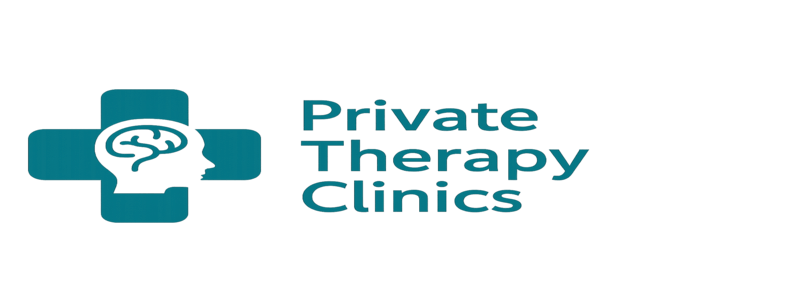
Perhaps it’s more than just stress; the term masks a cumulative state that resembles fatigue but acts more like a fracture, gradually getting worse due to constant comparison, uncertain job opportunities, and an endless news cycle.
Although many Gen Zers claim to be stressed, therapy reveals the underlying issues of disconnection, ongoing low-level grief, and the exhaustion that comes from assuming one’s identity for the benefit of others.
| Aspect | Information |
|---|---|
| Topic | Maybe It’s Not Just Stress — How Therapy Can Help Gen Z Reconnect and Recover |
| Core Argument | Examines how therapy helps Gen Z move beyond surface-level stress management toward deeper reconnection: self-understanding, relationship repair, and purposeful resilience. |
| Key Elements | Telehealth adoption; social media’s double-edged role; therapy as preventive self-care; skills-building (boundaries, emotional literacy); cultural destigmatization. |
| Representative Figures / Mentions | Billie Eilish; Selena Gomez; Dr. Thalia Wheatley; clinics and platforms such as H Medical Mental Health Clinic, Talkspace, BetterHelp. |
| Reference | Pacific Oaks College |
Therapy offers a different pace, one where attention is measured not in notifications but in patient, listening exchanges that assist a person in mapping their inner life. Therapy is increasingly viewed as routine maintenance rather than last-resort rescue.
Young clients come to clinics and online resources having already Googled trauma responses, attachment theory, or cognitive behavioral therapy; they are not necessarily changed, but they are informed, and the therapeutic dialogue is what transforms information into personal understanding.
Since early intervention frequently keeps conditions from calcifying into chronic dysfunction, this generation approaches mental health appointments proactively, much like previous generations did when scheduling dental cleanings. This shift is significant both practically and symbolically.
In a paradoxical way, social media is where many people first encountered the terms for anxiety and depression, where Selena Gomez and Billie Eilish normalized therapy, and where peer groups provided instant comfort. However, these same platforms also frequently undermine the systems that support true belonging, which creates a need for healing that therapy can help with.
Therapy as a rehearsal space is a recurring image in my discussions with clinicians. Young clients return to daily life more accustomed and, most importantly, more brave in asking for what they need after practicing naming emotions, testing boundaries, and experimenting with various phrases for challenging conversations.
This change has been made possible in large part by telehealth. The ability to enter therapy from a bedroom or a trusted private corner has proven especially helpful for Gen Z, whose social life is naturally hybrid and whose privacy is frequently fragile. This option has also helped to normalize continuity of care and lower barriers to access.
However, access by itself does not equate to recovery; therapy content is important. Emotional literacy is the main focus of effective clinicians; they teach people how to recognize feelings, categorize thoughts, and convert those observations into practical techniques like values-based decision-making, paced breathing, or tiny behavioral experiments intended to test anxious predictions.
While psychodynamic and humanistic approaches assist many in unraveling deeper patterns rooted in family stories or early relational wounds, cognitive behavioral therapy’s pragmatic orientation is well-suited to a generation that values quantifiable progress. This results in insight that is not only intellectual but also personally liberating.
Special recognition should be given to peer-supported workshops and group therapy, which serve as micro-communities where young adults can experience repair in real time and relearn conversational skills. They also learn that messy vulnerability can be met with steady curiosity rather than judgment.
For many young people, the pandemic sped up a realization that social media could not replace embodied reciprocity and that extended isolation exacerbated underlying anxieties that had been controlled when everyday life offered organic experiences of correction.
By establishing new routines—frequent check-ins, boundary-setting techniques, and relational experiments that gradually and sustainably rebuild trust in others—therapy aids in the reconstruction of those experiences.
Talk therapy combined with concrete self-regulation techniques has been shown to significantly reduce symptoms in both clinical and research settings. Journaling, guided mindfulness, and graded exposure to avoided situations help the nervous system return to engagement after being in constant alarm.
The impact of celebrities talking candidly about their therapeutic experiences is twofold: it democratizes language and lessens stigma, but it can also lead to oversimplified perceptions that therapy is a quick fix rather than a long-term practice. More people are responding favorably to the straightforward message that clinicians convey: therapy is work, frequently incremental, and sometimes uncomfortable.
The mental health industry has quickly adapted to Gen Z’s demands for cultural competence and identity-affirming care, leading to an increase in therapists with training in intersectional frameworks, trauma-informed care, and telehealth modalities that cater to the communication preferences of the generation.
As a result, the mental health supply chain has changed, with new training programs, additional career pathways, and educational institutions modifying their curricula to produce clinicians who are both culturally competent and clinically rigorous. In response to an unparalleled need for professionals who can address the needs of young people, this development is especially noteworthy at educational institutions and programs that prioritize community mental health or marriage and family therapy.
Practically speaking, therapy imparts a set of transferable skills, such as the ability to set boundaries in relationships, pragmatistically solve problems related to academic and professional stress, communicate honestly and emotionally, and accept uncertainty without making dire predictions. Once internalized, these abilities create a kind of agency that many clients find shockingly novel.
Additionally, there is a political component. Employers, academic institutions, and legislators have been under pressure from Gen Z’s public discussions about mental health to view psychological wellbeing as an institutional duty rather than just a personal shortcoming. This pressure is reflected in mental health days, increased counseling services on campus, and remote therapy options, which convert individual needs into systemic improvements.
However, care must be taken. The trend toward therapy in society runs the risk of commercializing care or promoting therapy shopping without maintaining therapeutic continuity. When therapy is maintained, techniques are used in between sessions, and clients and clinicians collaborate to develop a clear, evidence-based growth plan, the most long-lasting benefits manifest.
Numerous young clients anecdotally recount a time, usually months into therapy, when a minor social situation that was previously intolerable feels suddenly manageable; they pause, take a deep breath, and respond instead of reacting. These seemingly insignificant moments add up to a different level of life quality.
The promise of therapy is not so much in dramatic rescues as it is in gradual repair: regaining the ability to set boundaries without guilt, ask for help without shame, and enjoy relationships without performative self-presentation. According to this perspective, recovery is a continuous process of developing presence-sustaining habits rather than a destination.
Given that Gen Z’s needs are intersectional and their identities are frequently entwined with digital existence, clinicians should provide flexible formats, incorporate skills training with reflective discourse, and pay close attention to cultural context.
The message is equally applicable to communities: create environments, such as classrooms, workplaces, or public gatherings, where youth can practice being seen without being curated. These are the social laboratories where the lessons learned from therapy can be incorporated into everyday life.
Lastly, the hopeful horizon: society gains from more resilient citizens, better collaborators, and individuals who can have challenging conversations without tearing each other apart when a generation learns to see emotional care as a competency to be developed—alongside financial literacy or civic engagement.
Perhaps it’s more than just stress. Perhaps it’s a chance to teach a new generation how to reestablish, mend, and recover by using therapy as a metaphor and a technique for strengthening the bonds of close, sincere, and occasionally uncomfortable human connection.
It may eventually seem like a formative restructuring of how we coexist emotionally, socially, and professionally if this shift—clinics expanding access, training programs producing culturally fluent therapists, and institutions embedding wellbeing into policy—continues.

